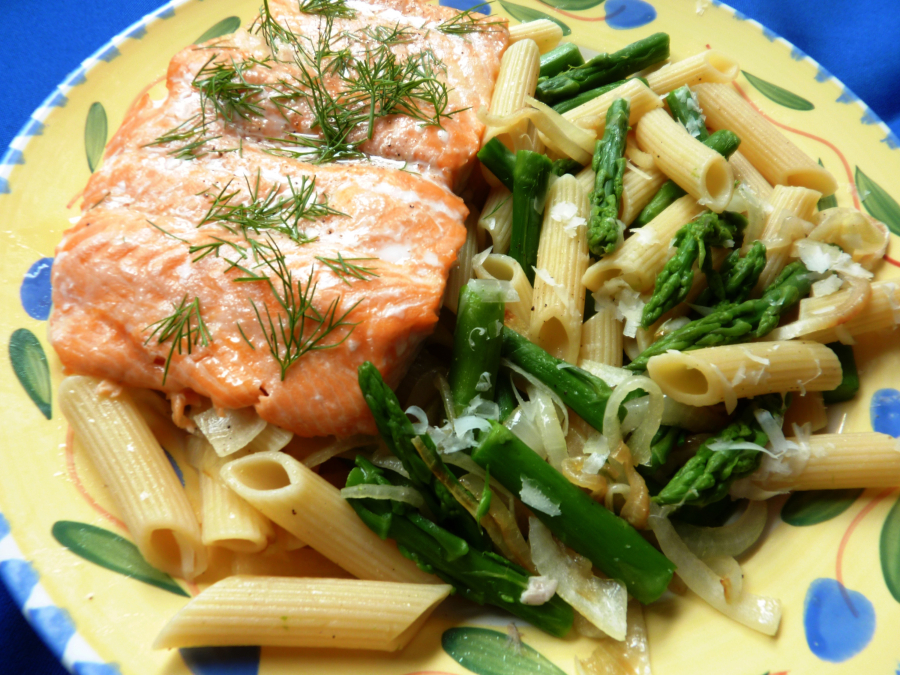• Any type of pasta can be used.
• A guideline for cooking fish fillets is 10 minutes per inch of thickness. I prefer to cook my filets 8 minutes because they continue to cook in their own heat when removed from the stove or oven.
Roasted Wild Salmon
Makes 2 servings
Recipe by Linda Gassenheimer
3/4 pound fresh wild salmon with skin, about 1 1/2-inches thick
Olive oil spray
Salt and freshly ground black pepper
1 tablespoon snipped dill
Preheat oven to 425 degrees. Line a baking tray with foil and place in the preheating oven. When oven is at temperature, remove tray, spray with olive oil spray and place salmon, skin side down, on it. Spray salmon with olive oil spray and sprinkle with salt and pepper to taste. Place on middle shelf in oven for 12 minutes or until salmon is just cooked through. Adjust cooking time for a thicker or thinner fillet. A meat thermometer should read 125 degrees. When a knife is inserted, the flesh should be opaque not translucent. Do not overcook. The salmon will continue to cook in its own heat when removed from the oven. Sprinkle the salmon with the dill and serve.
Per serving: 261 calories (45 percent from fat), 12.9 g fat (1.8 g saturated, 4.9 g monounsaturated), 96 mg cholesterol, 33.8 g protein, 0.6 g carbohydrates, 0 g fiber, 75 mg sodium.
Asparagus Penne Pasta
Makes 2 servings
Recipe by Linda Gassenheimer
1/4 pound penne pasta (about 1 1/2-cups)
2 teaspoons olive oil
1 cup sliced onion
1/2 pound fresh asparagus, cut into 2-inch pieces
Salt and freshly ground black pepper to taste
2 tablespoons grated Parmesan cheese
Place a large saucepan with 3 to 4 quarts of water on to boil. Meanwhile heat oil in a large nonstick skillet and add onion. Saute onion for 5 minutes or until they are golden but not brown. When the water is at a full boil, add the penne pasta and boil 5 minutes. Add the asparagus and continue to boil 3 to 4 minutes or until pasta is cooked al dente. Remove 1/4 cup pasta water from the pan and add it to the onions in the skillet. Drain the pasta and asparagus and add to the skillet. Toss well. Add salt and pepper to taste and sprinkle with Parmesan cheese.
Per serving: 319 calories (20 percent from fat), 7 g fat (1.7 g saturated, 3.8 g monounsaturated), 4 mg cholesterol, 12.5 g protein, 52.7 g carbohydrates, 5.1 g fiber, 84 mg sodium.



